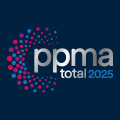
Posted to News on 28th May 2011, 00:00
High speed fibre placement on large aircraft structures
Electroimpact has developed an automated fibre placement solution offering 2000in per minute placement speed. A sophisticated control system and very stable and accurate axes drive systems were essential: Andantex provided the critical components.

Reducing aircraft weight is essential to boosting fuel efficiency. Not only is it very important in terms of cost, but also given the ever-increasing distances that aeroplanes of the future are expected to travel more capacity is essential. Carbon fibre's high strength-to-weight ratio is one of the main innovations today, but the need for high production rates requires extremely complex machines.
Electroimpact has set out to be the premier supplier of automated equipment to the worldwide aircraft industry. Its Automated Fiber Placement (AFP) technology allows cutting and adding carbon fibre strips within customer-end placement tolerances at high speeds over ramped, complex surfaces. All layups can be performed fully bi-directionally and with operator control over the feed rate with no effect on end cut accuracy.
The AFP machine is designed to manufacture large commercial aircraft structures and features fully modular, quick change heads with 30 second automatic head change. In order to make these large aerospace parts, the machine structure that controls the X, Y and Z motion of the fibre placement head (post mill or gantry designs) weighs 175 tons and is accelerated at 0.2g. Carbon fibre tows (narrow strips of impregnated carbon fibre) are placed on multiple material forms on the same part for the highest possible productivity. It is a 100% no-twist, 100% no-splice breakage and fully bi-directional operation.
The X, Y, Z and barrel rotation axes work together to let the carbon fibre follow the contour of the part being manufactured. The carbon fibre tows are placed on the tool which is machined into the shape of the final part. Furthermore, the carbon fibre has to be applied in different layers and different directions to optimise the strength of the final part. The point is that carbon fibre is very strong in tension, so all of the loads acting on the part must be supported in tension. The strokes can vary from around 2m of X-axis travel up to the full X-axis travel length which 30m, depending on the part being manufactured.
This machine involved a complete re-engineering of the cutting system and optimisation of the feed system, tow path and creel system of the fibre placement head. Total accuracy and repeatability of the cutting system had to be much better than a typical CNC scan rate (4 - 8 ms). Individual component repeatability (actuators, valves, etc.) had to be in the sub-millisecond range or better. And the system for signaling a cut had to have sub-millisecond resolution.
Electroimpact developed a high speed cutting mechanism that allows cutting at high speeds with total cut times less than 1 millisecond. This system also has very little variability, making tow placement accurate and repeatable even at very high laydown rates. The factors, which affect the timing of on-the-fly cutting and adding include program execution, output module reaction, solenoid valve actuation, airflow and inertial reactions of the actuating mechanisms, etc. Each of these factors provides a lag in the execution of a cut or add relative to the nominal signal. If the lag is predictable and repeatable, the cut timing can be compensated. These lags also need to be minimised where possible. From extensive development and testing at Electroimpact, the variability in lag for both feeding and cutting has been reduced below 1 millisecond, making end-of-cut or start-of-course placement very accurate at high speeds.
Conventional controllers such as PLCs or CNCs generally operate on a 'scan time', typically measured in milliseconds. Outputs are actuated once per scan, thereby limiting the timing resolution to the scan time. With a 1 millisecond delay resulting in a 0.033in end placement error at 2000in/minute, introducing a control error of even 1 millisecond would be unacceptable for high speed on-the-fly cuts or adds. Extremely tight integration of the CNC motion control and the timing of the cut and add commands is required to reduce the control timing delays to a minimum.
Control system
Electroimpact chose to use Fanuc's Customer Board, a system that allows Electroimpact to interpolate the cutting and adding into the motion profile at the velocity command level of the CNC. This is the first implementation of the Customer Board outside Japan, and Electroimpact worked closely with Fanuc to implement features specifically for AFP applications. The control induced timing delays are in the range of microseconds, which effectively eliminates control timing delays as a source of error in cutting and adding.
The electro-mechanical aspect of the machine relies on a TwinDrive rack and pinion drive system from Andantex, made up of two parallel mounted planetary servo reducers that are coupled electrically. This preload system eliminates the backlash and allows the servo system to precisely control axis position.
It was also important to ensure the highest stiffness to offer perfect repeatability despite frequent acceleration. Extreme rigidity is provided in all directions by an output shaft with an integral pinion supported by reinforced output bearings. This Redex Andantex concept provides excellent torsional stiffness characteristics, but most notably, it offers exceptional rigidity along the other planes. This often enables use of up to twice the acceleration rates or weight of other solutions. The design combines strongly reinforced output bearings with pinions integral to the output shaft (case hardened and ground, and the same diameter as the shaft). The pinion pitch diameter is optimised to ensure the best ratio between the torque transmitted and rigidity as seen from the rack point of view.
The bearing arrangement itself consists of two tapered roller bearings, preloaded and generously oversized. This bearing arrangement is designed to support the pinion as close as possible to the applied force, with only the thickness of the locknut separating the pinion from the output bearing. This particular design provides a considerable reduction in radial deflection, which is the cause of 60% of overall deflection but is rarely dealt with satisfactorily by other systems.
Andantex equipment is installed on all axes creating a unique responsibility in the global mechanical machine behaviour. The barrel rotation axis drives the tool that the carbon fibre is being placed onto. This tool is typically made of invar which is a type of steel with a very low thermal expansion rate. This is important because once the part is made the whole assembly is put into an autoclave and baked to be sure the impregnated carbon fibre will cure into its final state. After that the tool is removed and the remaining part is completely made of carbon fibre.
For secondary encoder feedback on the X-axis and Y-axis, Electroimpact also uses Andantex's PDP or 'split pinion' to drive the encoder directly from the rack with zero backlash. The PDP is made of two ground pinions, each half the width of the rack, connected through a patented preload system to eliminate the rack and pinion mesh backlash.
Finally, Andantex provided Electroimpact with rack modules designed to be linked end to end to create the required length for the axis. "At the end, the placement precision is equal to the cutting precision (±0.050in) at maximum speed," says Dave Regiec, Andantex's project manager. "The axis driven by the Redex Andantex reducers must be more precise than this value since they are all working together to form a complex shape. We can estimate the X-axis, Y-axis and Z-Axis precision to be one tenth of the placement precision or ±0.005in."
Lythalls Lane Industrial Estate
Lythalls Lane
CV6 6FL
UNITED KINGDOM
+44 (0)2476 307722








